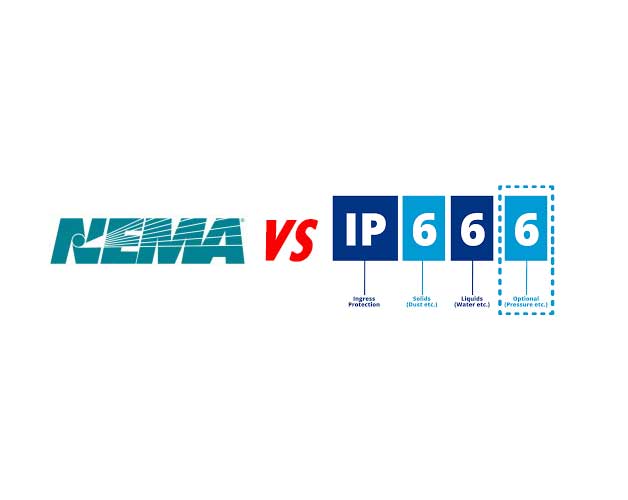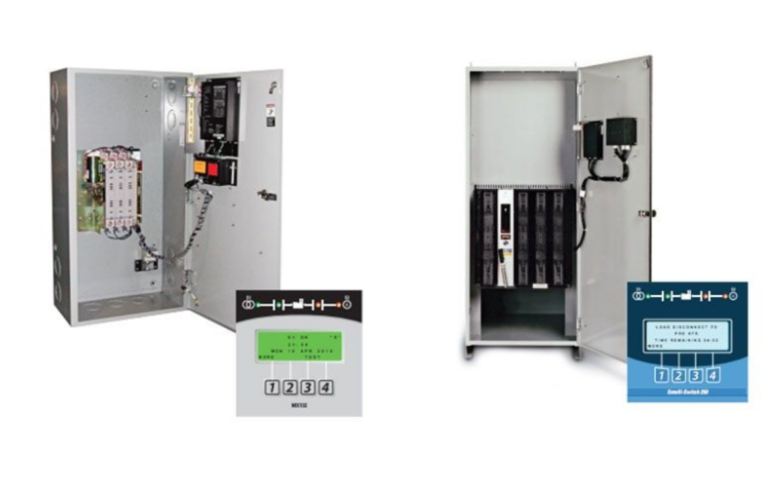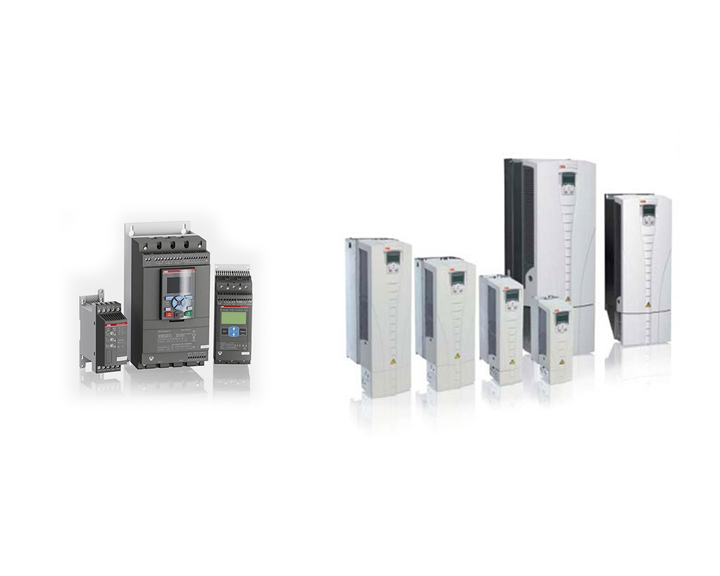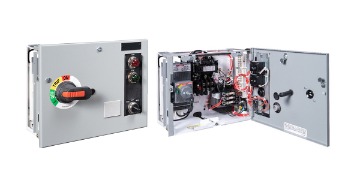NEMA vs. IP Ratings
NEMA and IP ratings are different ways to rate the enclosure of an electrical device.
NEMA ratings are from the National Electrical Manufacturers Association, while IP (Ingress Protection) ratings are from the International Electrotechnical Commission. NEMA ratings are more common in North America, while IP ratings are more common in Europe.
The main difference between NEMA and IP ratings is that NEMA rates enclosures based on their ability to protect against physical damage, while IP rates enclosures based on their ability to protect against water and dust ingress. NEMA also has a higher maximum rating than IP (NEMA Type 12 vs. IP54).
When choosing an enclosure for an electrical device, it is essential to consider both NEMA and IP ratings to ensure the device will be protected against physical damage and water and dust ingress.
To learn everything you need to know about NEMA and IP ratings, continue reading this detailed guide!
What is a NEMA rating?
The National Electrical Manufacturers Association (NEMA) is a trade association representing more than 375 companies that make electrical equipment. NEMA was founded in 1926, and its standards are used worldwide.
A NEMA enclosure rating is a classification system for enclosures that contain electrical equipment. NEMA rates enclosures based on their ability to protect against physical damage, such as impact, vibration, and water.
NEMA has 13 different types of enclosure ratings, from NEMA Type 1 (the lowest level of protection) to NEMA Type 12K (the highest level of protection).
What is an IP rating?
IP ratings are governed by the International Electrotechnical Commission (IEC), a global organization that sets electrical and electronic equipment standards. The IEC was founded in 1906, and its standards are used in more than 150 countries.
An IP rating, or Ingress Protection rating, is a code that consists of the letters "IP" followed by two numbers. The first number corresponds to the level of protection against solid objects, and the second number corresponds to the level of protection against liquids.
IP ratings are classified on a scale from 0 to 6, with 0 being the lowest level of protection and six being the highest.
The first number in an IP rating (the number right after the "P") corresponds to the level of protection against solid objects. The second number in an IP rating (the last number) corresponds to the level of protection against liquids.
Here is a breakdown of what each number in an IP rating means:
- 0: No protection
- 1: Protection against solid objects larger than 50mm, such as hands
- 2: Protection against solid objects larger than 12.5mm, such as fingers
- 3: Protection against solid objects larger than 2.5mm, such as tools
- 4: Protection against solid objects larger than 1mm, such as wires
- 5: Protection against dust that could cause damage
- 6: Protection against dust that could cause damage and water that could cause damage
The higher the number, the greater the level of protection.
So, for example, an IP54 rating means that the enclosure is protected against dust and water.
How NEMA and IP Enclosure Ratings Compare
The main difference between NEMA and IP ratings is that NEMA rates enclosures based on their ability to protect against physical damage, while IP rates enclosures based on their ability to protect against ingress of water and dust.
While NEMA ratings are more common in North America, IP ratings are more common in Europe. However, NEMA does have a higher maximum rating than IP (NEMA Type 12K vs. IP54).
NEMA ratings tend to be more specific than IP ratings, with NEMA Type 13 being the highest water and dust resistance rating. Overall, NEMA vs. IP ratings offer similar levels of protection against water and dust in electrical enclosures but differ in their specificity and applicability to indoor and outdoor environments.
For example, an IP54 rating means that the enclosure is protected against dust and water spray from all sides. In contrast, a NEMA Type 12 rating means that the enclosure offers good protection against ingress of water (dripping and splashing), ingress of solid foreign objects (circulating and settling airborne dust lint, fibers, falling dirt, and flyings), and provide access to hazardous parts.
The main difference between NEMA and IP ratings is that NEMA rates enclosures based on their ability to protect against physical damage, while IP rates enclosures based on their ability to protect against water and dust ingress.
So, if you're looking for an electrical enclosure for use in an outdoor environment, you should look for an enclosure with a NEMA Type 3 or higher rating. If you're looking for an enclosure to use in a wet or humid environment, an IP54 or higher rating would be more appropriate.
NEMA to IP Conversion Charts
Here is a comparison chart that you can use to convert between IP and NEMA enclosure ratings.
|
IP Rating Chart |
|
|
IP Rating |
Description |
|
IP20 |
Indoor use only; no protection against water or dust |
|
IP22 |
Indoor use only; limited protection against falling water droplets |
|
IP32 |
Protected against rain and snow; can be used outdoors |
|
IP42 |
Protected against splashing water; can be used outdoors |
|
IP52 |
Protected against dust and falling water droplets; can be used outdoors |
|
IP53 |
Protected against dust and low pressure spray water; can be used outdoors in light rain |
|
IP54 |
Protected against dust and splashing water; suitable for use in humid conditions or near water |
|
IP55 |
Dust-tight enclosure that can handle low-pressure jets of water; suitable for bathrooms or kitchens |
|
IP65 |
Waterproof enclosure that is protected against low-pressure jets of water from all directions; suitable for outdoor use in all weather conditions |
|
IP66 |
Waterproof enclosure that is protected against high-pressure jets of water from all directions; suitable for outdoor use in all weather conditions |
|
IP67 |
Waterproof enclosure that is protected against short periods of immersion in water; suitable for outdoor use in all weather conditions |
|
IP68 |
Waterproof enclosure that can handle long periods of immersion in water; suitable for use in extreme conditions, such as underwater |
|
IP69K |
Dust-tight and waterproof enclosure that can handle high-pressure and high-temperature jets of water; suitable for use in extremely dirty or wet environments |
|
NEMA Rating Chart |
|
|
NEMA Rating |
Description |
|
Type 1 |
Access to hazardous parts, Ingress of solid foreign objects (falling dirt) |
|
Type 2 |
Access to hazardous parts, Ingress of solid foreign objects (falling dirt), Ingress of water (Dripping and light splashing) |
|
Type 3 |
Access to hazardous parts, Ingress of water (Rain, snow, and sleet), Ingress of solid foreign objects (Windblown dust, lint, fibers, and flyings) |
|
Type 4 |
Access to hazardous parts, Ingress of solid foreign objects (falling dirt), Ingress of water (Dripping and light splashing), Ingress of solid foreign objects (Circulating dust, lint, fibers, and flyings), Ingress of solid foreign objects (Settling airborne dust, lint, fibers, and flyings), Ingress of water (Hosedown and splashing water) |
|
Type 4X |
Access to hazardous parts, Ingress of solid foreign objects (falling dirt), Ingress of water (Dripping and light splashing), Ingress of solid foreign objects (Circulating dust, lint, fibers, and flyings), Ingress of solid foreign objects (Settling airborne dust, lint, fibers, and flyings), Ingress of water (Hosedown and splashing water), Corrosive agents |
|
Type 5 |
Access to hazardous parts, Ingress of solid foreign objects (falling dirt), Ingress of water (Dripping and light splashing), Ingress of solid foreign objects (Settling airborne dust, lint, fibers, and flyings) |
|
Type 6 |
Access to hazardous parts, Ingress of solid foreign objects (falling dirt), Ingress of water (Dripping and light splashing), Ingress of solid foreign objects (Circulating dust, lint, fibers, and flyings), Ingress of solid foreign objects (Settling airborne dust, lint, fibers, and flyings), Ingress of water (Hosedown and splashing water), Ingress of water (Occasional temporary submersion) |
|
Type 6P |
Access to hazardous parts, Ingress of solid foreign objects (falling dirt), Ingress of water (Dripping and light splashing), Ingress of solid foreign objects (Circulating dust, lint, fibers, and flyings), Ingress of solid foreign objects (Settling airborne dust, lint, fibers, and flyings), Ingress of water (Hosedown and splashing water), Corrosive agents, Ingress of water (Occasional temporary submersion), Ingress of water (Occasional prolonged submersion) |
|
Type 7 |
Enclosures constructed for indoor use in hazardous (classified) locations classified as Class I, Division 1, Groups A, B, C, or D as defined in NFPA 70. |
|
Type 8 |
Enclosures constructed for either indoor or outdoor use in hazardous (classified) locations classified as Class I, Division 1, Groups A, B, C, and D as defined in NFPA 70. |
|
Type 9 |
Enclosures constructed for indoor use in hazardous (classified) locations classified as Class II, Division 1, Groups E, F, or G as defined in NFPA 70. |
|
Type 10 |
Enclosures constructed to meet the requirements of the Mine Safety and Health Administration, 30 CFR, Part 18. |
|
Type 12 |
Enclosures without knockouts, Access to hazardous parts, Ingress of solid foreign objects (falling dirt), Ingress of water (Dripping and light splashing), Ingress of solid foreign objects (Circulating dust, lint, fibers, and flyings), Ingress of solid foreign objects (Settling airborne dust, lint, fibers, and flyings), Oil and coolant seepage |
|
Type 12k |
Enclosures with knockouts, Access to hazardous parts, Ingress of solid foreign objects (falling dirt), Ingress of water (Dripping and light splashing), Ingress of solid foreign objects (Circulating dust, lint, fibers, and flyings), Ingress of solid foreign objects (Settling airborne dust, lint, fibers, and flyings), Oil and coolant seepage |
|
Type 13 |
Enclosures with knockouts, Access to hazardous parts, Ingress of solid foreign objects (falling dirt), Ingress of water (Dripping and light splashing), Ingress of solid foreign objects (Circulating dust, lint, fibers, and flyings), Ingress of solid foreign objects (Settling airborne dust, lint, fibers, and flyings), Oil and coolant seepage, Oil or coolant spraying and splashing |
Source: National Electrical Manufacturers Association (NEMA)
As you can see, NEMA and IP ratings are similar but not identical. Both NEMA and IP ratings measure the level of protection provided by an electrical enclosure. Still, NEMA ratings focus more on indoor use, while IP ratings are intended for indoor and outdoor use.
Need a NEMA Rated Electrical Panel?
Looking for a NEMA or IP Rated Electrical Enclosure?
Whatever your needs, you'll find NEMA and IP-rated enclosures to keep your electrical equipment safe from water and dust. To learn more, check out Bay Power's offering of NEMA-rated pump, motor, and custom control panels today!




